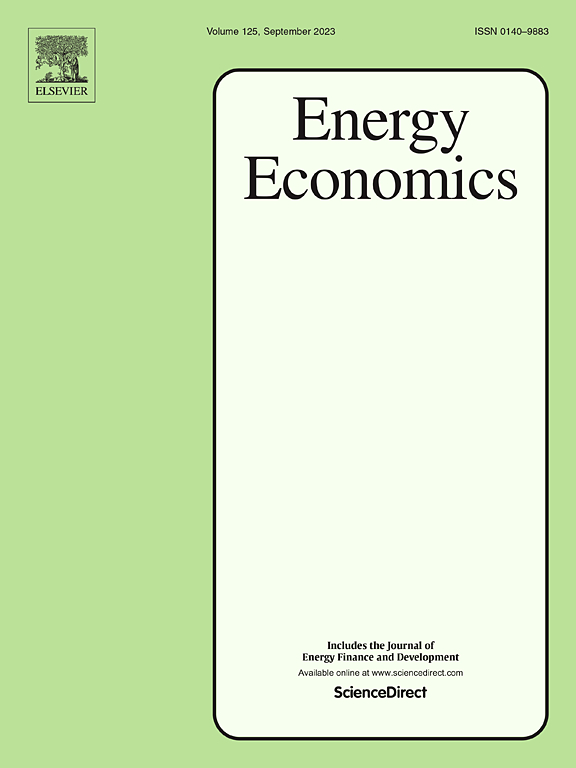确定减排和通货膨胀目标制下的有效政策组合:以印度为例
IF 14.2
2区 经济学
Q1 ECONOMICS
引用次数: 0
摘要
本文研究了不同环境政策干预的经济周期动态,为实现宏观经济稳定与有效减排之间的平衡提供了可行的解决方案。从新凯恩斯主义宏观经济分析来看,我们的研究结果表明,限额与交易政策在减少过度排放方面发挥了主导作用,并具有良好的宏观经济效应。值得注意的是,研究结果还表明,相对于传统货币政策,通胀目标制货币政策在控制碳排放上升方面的作用显著。我们的分析通过了几个稳健性检查。总体而言,研究结果表明,如果在通货膨胀目标货币政策框架下运作,限额与交易政策将产生更有效的结果,因为它不仅增加了产出和减少了排放,而且还控制了不断升级的通货膨胀。然而,无限制地使用这种政策干预措施来减缓排放可能是不明智的,因为它可能导致区域排放不对称。本文章由计算机程序翻译,如有差异,请以英文原文为准。
Identifying efficient policy mix under emission mitigation and inflation targeting: A case of India
This article investigates the business cycle dynamics of different environmental policy interventions, to offer a viable solution for balanced macroeconomic stability with effective emission reduction. From the New Keynesian macroeconomic analysis, our findings imply a leading role of cap and trade policy in abating excessive emissions with a favorable macroeconomic effect. Of note, the results also indicate the significant role of inflationary targeting monetary policy relative to the conventional monetary policy in controlling the rising carbon emission. Our analysis passes several robustness checks. Overall, findings imply that the cap and trade policy, if operated under the inflationary targeting monetary policy framework, will result in a more efficient outcome as it not only increases output and reduces emissions but also controls the escalating inflation. However, the unrestricted use of this policy intervention for emission mitigation may be ill-advised because it can contribute to regional emission asymmetry.
求助全文
通过发布文献求助,成功后即可免费获取论文全文。
去求助
来源期刊

Energy Economics
ECONOMICS-
CiteScore
18.60
自引率
12.50%
发文量
524
期刊介绍:
Energy Economics is a field journal that focuses on energy economics and energy finance. It covers various themes including the exploitation, conversion, and use of energy, markets for energy commodities and derivatives, regulation and taxation, forecasting, environment and climate, international trade, development, and monetary policy. The journal welcomes contributions that utilize diverse methods such as experiments, surveys, econometrics, decomposition, simulation models, equilibrium models, optimization models, and analytical models. It publishes a combination of papers employing different methods to explore a wide range of topics. The journal's replication policy encourages the submission of replication studies, wherein researchers reproduce and extend the key results of original studies while explaining any differences. Energy Economics is indexed and abstracted in several databases including Environmental Abstracts, Fuel and Energy Abstracts, Social Sciences Citation Index, GEOBASE, Social & Behavioral Sciences, Journal of Economic Literature, INSPEC, and more.
 求助内容:
求助内容: 应助结果提醒方式:
应助结果提醒方式:


